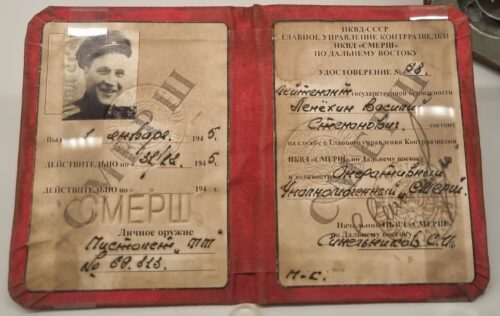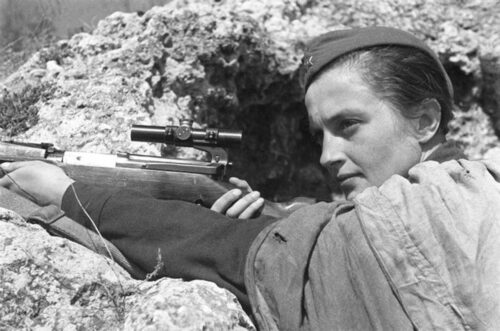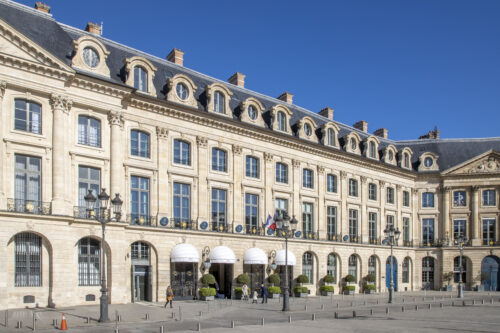Remote view of Galata Tower in Istanbul, Turkey. Fleming’s visit to Turkey in 1955, where he reported on an Interpol conference for The Sunday Times, was a source of inspiration for his novel.
In his particular line of business, peace had reigned for nearly a year. And peace was killing him.”― Ian Fleming, From Russia, with Love
The James Bond film From Russia with Love was released in the UK 60 years ago on 10 October 1963. The film was an adaption of Ian Fleming’s novel of the same name. It was the second film in the James Bond franchise and the second film to feature Sean Connery as James Bond.
Ian Fleming, the creator of James Bond, drew inspiration for his novel From Russia with Love, from a variety of sources and from actual events. Fleming, who was an officer in the British Naval Intelligence Division during the Second World War and a journalist, witnessed the tensions between the East and the West during the Cold War. He wrote in his author’s note that “a great deal of the background to this story is accurate” and that SMERSH, the Soviet counterintelligence agency, “remains today the most secret department of the Soviet government”.

The plot of the novel centers on a plot by SMERSH, the Soviet counter-intelligence agency, to assassinate Bond in such a way as to discredit both him and his organization. SMERSH plans to commit a grand act of terrorism in the intelligence field. For this, it targets James Bond. His death is planned to precipitate a major sex scandal, which will run in the world press for months and leave his and his service’s reputations in tatters. Bond’s killer is to be the SMERSH executioner Donovan “Red” Grant, a British Army deserter and psychopath whose homicidal urges coincide with the full moon.
Colonel Kronsteen, the chess-playing head of SMERSH’s Planning Department, and Colonel Rosa Klebb, the head of Operations and Executions, devise the operation. As bait, the Russians use a beautiful cipher clerk Tatiana Romanova and the Spektor, a Soviet decoding machine¹. Much of the action takes place in Istanbul and on the Orient Express¹.
Later, in Paris, after successfully delivering Romanova and the booby-trapped Spektor to his superiors, Bond meets Rosa Klebb. She is captured but manages to kick Bond with a poisoned blade concealed in her shoe; the story ends with Bond fighting for breath and falling to the floor.
SMERSH was an acronym of Russian: Смерть Шпионам (Smyert Shpionam), which means “Death to Spies”. It was an umbrella name for three independent counter-intelligence agencies in the Red Army formed in late 1942 or even earlier, but officially announced only on 14 April 1943. The main tasks of SMERSH were to prevent any espionage or sabotage activities by the enemy, to eliminate traitors and deserters in the Red Army, and to protect the front lines from infiltration by spies and anti-Soviet elements.
Another source of inspiration was his visit to Turkey in 1955, where he reported on an Interpol conference for The Sunday Times and traveled back to Britain by the Orient Express. He was fascinated by the exotic and mysterious atmosphere of Istanbul and the train journey, which he incorporated into his novel. He described Istanbul as “a town of domes and minarets” and the Orient Express as “the great train that links Europe with Asia”.

Fleming also drew inspiration from his admiration for the works of John Buchan and Sapper, two writers of adventure and espionage fiction, whose influence can be seen in the fast-paced and thrilling plot of From Russia, with Love. Fleming once said that he wanted to write “the spy story to end all spy stories” and that he aimed to create “a thriller that would be both exciting and instructive”.
Fleming also researched extensively on the Soviet intelligence agency SMERSH, which he made the main antagonist of his novel. He used authentic details and realistic scenarios to depict the ruthless and cunning methods of SMERSH in trying to assassinate Bond and discredit the British secret service. He based some of his characters on real-life figures, such as Colonel Rosa Klebb, who was inspired by a female Soviet spy named Lyudmila Pavlichenko.
Lyudmila Pavlichenko was a Soviet sniper who fought in World War II and is credited with killing 309 enemy combatants. She was nicknamed “Lady Death” by her enemies and became a hero of the Soviet Union. She served in the Red Army during the siege of Odessa and the siege of Sevastopol, where she engaged in duels with enemy snipers. She was wounded by a mortar shell in 1942 and was evacuated to Moscow. She later toured the United States, Canada, and Britain as a public spokeswoman for the Red Army.

The plot of from Russia, With Love centers on a plot by SMERSH, the Soviet counter-intelligence agency, to assassinate Bond in such a way as to discredit both him and his organization. His death is planned to precipitate a major sex scandal, which will run in the world press for months and leave his and his service’s reputations in tatters. Bond’s killer is to be the SMERSH executioner Donovan “Red” Grant, a British Army deserter and psychopath whose homicidal urges coincide with the full moon.
Kronsteen, SMERSH’s chess-playing master planner, and Colonel Rosa Klebb, the head of Operations and Executions, devise the operation. As bait, the Russians use a beautiful cipher clerk Tatiana Romanova and the Spektor, a fictional Soviet decoding machine. Much of the action takes place in Istanbul and on the Orient Express.
Later, in Paris, after successfully delivering Romanova and the booby-trapped Spektor to his superiors, Bond has a final encounter with Rosa Klebb in the Ritz Hotel in Paris. She is killed by Romanova but manages to kick Bond with a poisoned blade concealed in her shoe. The novel ends with Bond fighting for breath and falling to the floor, with his fate uncertain.

Film Adaptation
In the novel, Klebb was a high-ranking member of SMERSH and the supervisor of Department II (operations and executions). She had a reputation for overseeing the interrogations of enemy agents and torturing them with a knuckle duster. She was also strongly implied to be a lesbian, which Fleming used as a way to show her villainy.
In the film, however, Klebb was depicted as a former SMERSH head who had defected to become a member of SPECTRE, a criminal organization led by Ernst Stavro Blofeld, the most recurring antagonist in the franchise. She was referred to as “No. 3” by Blofeld, indicating that she was the third highest ranking individual in SPECTRE behind only Blofeld and Emilio Largo. She was also shown to have a more feminine appearance and mannerisms than in the novel, although she still retained her poison-tipped shoe as a weapon. In the film, Kronsteen was the chief planner for SPECTRE and a Czechoslovak chess grandmaster.
SPECTRE is an acronym of Special Executive for Counterintelligence, Terrorism, Revenge, and Extortion. It is a fictional organization featured in the James Bond novels by Ian Fleming, as well as the films and video games based on those novels. SPECTRE is not aligned to any nation or political ideology, enabling the later Bond books and Bond films to be regarded as apolitical.
Originally conceived of as a small group of professional criminals in the novels, SPECTRE became a vast international organization with its own elaborate facilities and operations in the film series. Led by 007’s nemesis Ernst Stavro Blofeld, the organization first formally appeared in the novel Thunderball (1961) and subsequently in the movie Dr. No (1962). SPECTRE’s main goal is to achieve world domination through terrorism, extortion, and other criminal activities. SPECTRE often employs former members of other criminal or intelligence organizations, such as SMERSH, the Gestapo, the Mafia, and the Unione Corse. SPECTRE’s symbol is an octopus, which represents its reach and power across the globe.
In the novel, the fictional Spector decoding device was booby-trapped to explode when examined. However, in the 1963 film adaptation, the device was renamed as the Lektor and was a genuine device that SPECTRE intended to sell back to the Soviets. The reason for the name change is not clear, but it most likely was done to avoid confusion with SPECTRE.
Also, unlike in the novel, Bond is aware of the deception and plays along to find out who is behind it. Another difference is that Grant is not a former British soldier, but an Irish assassin who was recruited by SPECTRE. He also has a more prominent role in the film, as he follows Bond and Romanova throughout their journey and kills several of their allies. The film also adds a scene where Bond and Romanova escape from a helicopter attack and a boat chase on the Bosphorus.
Another of the major differences between the film adaptation and the novel of From Russia, With Love is the final scene. In the film, Bond and Romanova travel on a boat at the end of the movie after killing Klebb, who tries to assassinate Bond with a poisoned shoe blade in a hotel room. The film ends with a romantic kiss between Bond and Tatiana.
Resources
The Official James Bond 007 Website
007.com
The Official Website for Ian Fleming
IanFleming.com
*The views and opinions expressed on this website are solely those of the original authors and contributors. These views and opinions do not necessarily represent those of Spotter Up Magazine, the administrative staff, and/or any/all contributors to this site.

